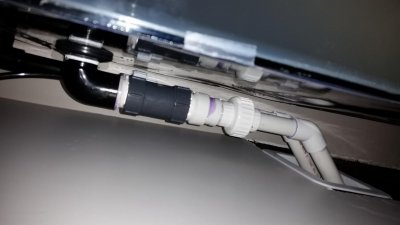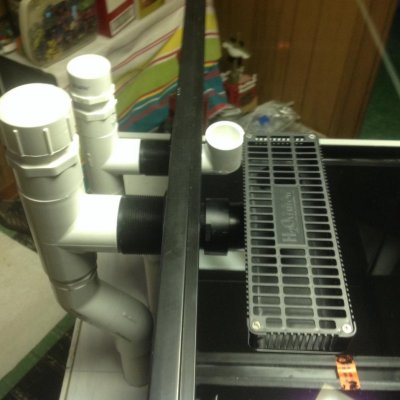So I just filled my tank with water for the first time and my overflow is making all sorts of noises and bubbling. I ordered my overflow box from glass holes, and I had to siphon the water to get it to flow down my drain. Is that normal?
I had a tee with a plug that I had to manually siphon to get the flow going, even though there was plenty of water overflowing the teeth.
There are 4 things that may be causing the issue that I can think of.
1. The check valve I have right after the 90 that comes out of my tank. (grey in picture) it is facing the right way.
2. The straw that sticks out of the 90 coming from the overflow box. I have it just poking through, is that how it's supposed to be?
3. the little cap that goes in the overflow box. Maybe it's not snapped in all the way, could that cause it?
4. The reducer from 1.5" to 1"?
Any ideas would be appreciated, I am at a loss and a stopping point because of this issue.
I had a tee with a plug that I had to manually siphon to get the flow going, even though there was plenty of water overflowing the teeth.
There are 4 things that may be causing the issue that I can think of.
1. The check valve I have right after the 90 that comes out of my tank. (grey in picture) it is facing the right way.
2. The straw that sticks out of the 90 coming from the overflow box. I have it just poking through, is that how it's supposed to be?
3. the little cap that goes in the overflow box. Maybe it's not snapped in all the way, could that cause it?
4. The reducer from 1.5" to 1"?
Any ideas would be appreciated, I am at a loss and a stopping point because of this issue.




















